The colour of light
Introduction
Without light there would be no photography. Taking an exposure of infinite length in a totally dark room will never result in a photograph. Even though the quantity of the light will enable photography, the quality of it will heavily influence the result. While the quantity of light is influenced by choosing the right aperture, time and sensitivity (ISO value), the quality itself is almost not influenceable by the photographer (at least in outdoor photography) and needs to be closely observed in nature. The only control is the white balance in digital photograhy and using different films for different light sources in analogue photography.
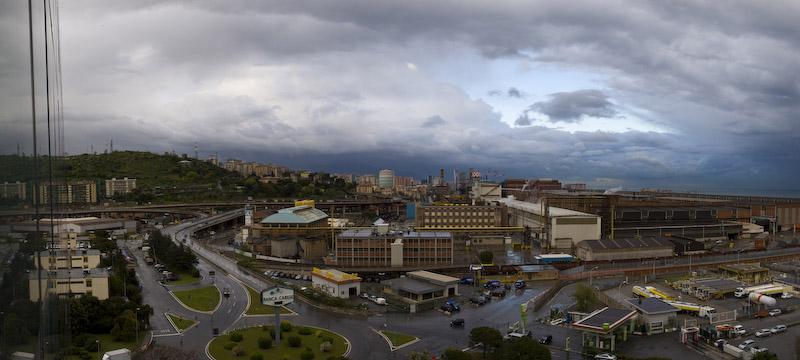
Basics
The colour of light is measured in Degree Kelvin. The temperature values describe a radiation emitted by a black radiator of a specific temperature. A black radiator is an ideal body which does not reflect any radiation and emits radiation following the Planck Law. The electromagnetic radiation pattern is dependent on the temperature of the black radiator. The higher the temperature, the shorter the wavelength of the emitted radiation, the higher the frequency of the electromagnetic waves: I.e. lower temperatures mean longer wavelength and therefore warmer light. This fact is a little bit controversial as the ´normal´understanding of warm means higher temperatures. Looking at the spectrum of a black radiator, a wavelength with maximum relative radiation can be found. This wavelength is unique for each temperature. Again: the higher the temperature, the shorter the wavelength of the frequency with the highest radiation density. The latter can be calculated using the rule of Wien (named after the physician Wien and not after the city in Austria):
The sun can also be modelled as a black radiator, even though the model is not totally correct. A black radiator has a continuous spectrum with no irregularities. However, the light from the sun is known to have gaps, called Fraunhofer (named after the German telescope designer and physicist Fraunhofer) gaps due to the way the radiation is generated and also due to absorption patterns in our atmosphere. However, for regular photography makes perfectly sense to use the model for the sun: a black radiator with a temperature of 5500 Kelvin for the afternoon sun. If you now use the rule of Wien, the wavelength with the highest radiation density is found to have a wavelength of 527nm which is in the greens, almost where our eye has the highest sensitivity.
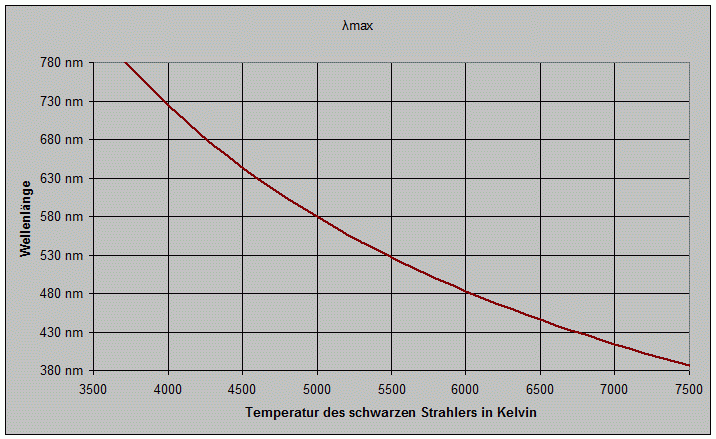
A normal bulb used to illuminate rooms has a temperature of 2200Kelvin, the respective lambda max lies at 1317nm which is already in the infrared and invisible for the human eye. This makes clear why a standard bulb is inefficient looking at the radiated light relative to the electrical energy used. The highest amount of energy is radiated in the infrared and not in the visible spectrum, which spread roughly from 400nm to 700nm. The reason why energy saving lamps are more effective than traditional bulbs is purely due to their shifted spectrum. They radiate mainly in the visible spectrum and have little radiation in the infrared compared to traditional bulbs. That´s why their respective heat dissipation is also smaller.
The table below shows black radiator temperatures for different light sources with therr respective lambda max, the wavelength with the highest radiation density.
| Lightsource | Colourtemperature | λmax |
|---|---|---|
| Candle | 1500 K | 1932 nm |
| Bulb, 40W | 2200 K | 1317 nm |
| Bulb, 60W | 2680 K | 1081 nm |
| Bulb, 100W | 2800 K | 1035 nm |
| Bulb, 200W | 3000 K | 966 nm |
| Bulb, Halide | 3000 K | 966 nm |
| Electronic Flash | 5500 K | 527 nm |
| Cloudy Sky | 6500 K | 446 nm |
| Misty day | 8000 K | 362 nm |
| Shadow | 7500 K | 386 nm |
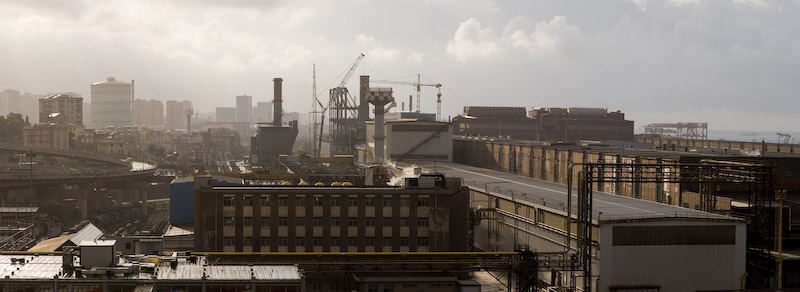
Light temperature variations during the day
The temperature of the light changes during the day. Everyone experienced a sunrise or sunset with its warm colours. This is due to absorptions and scattering processes in our atmosphere. Both processes are wavelength dependent. Longer wavelengths show less scattering than shorter wavelengths. This means that light with longer wavelengths (i.e. more red and warmer light) which travels from the sun to our eye is less affected by scattering than light with shorter wavelength (bluer and colder light). The more particles in the atmosphere, the higher the scattering and the warmer sunsets and sunrises. This is why colourful sunsets are visible after volcanic eruptions and over cities with smog (a combination of smoke and fog). The same processes cause the light to get colder on days with heavy cloud layers. The clouds scatter light with shorter wavelength. The light coming from the clouds is colder and bluer. On sunny days, the blue sky colour is caused by the same effects. In shadow areas, the light solely comes from the blue sky, no direct sunlight is received. The shadow show deep blue colour tones.
Beside the colour rendition itself, the directionality of the light is also heavily influenced by the atmosphere. On a clear day around noon the light is very harsh, i.e. very directional. As the sun travels along its path on the sky towards lower angles the light gets less directional and softer due to diffraction in the atmosphere. On clouded days the cloud layer effectively act as a huge light diffuser, i.e. the light is very non-directional.
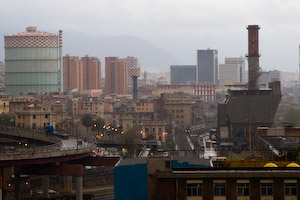
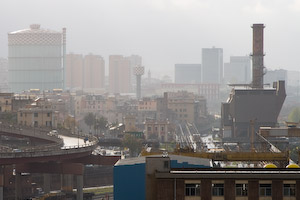
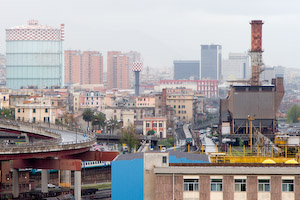
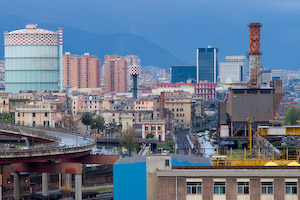
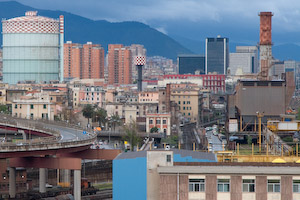
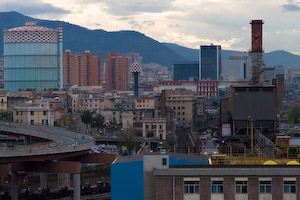
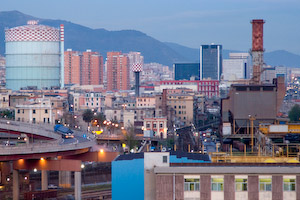
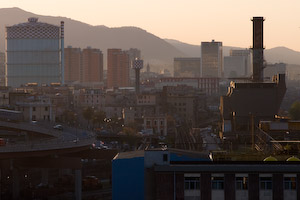
The atmosphere, a colour filter
As mentioned above, the atmosphere affects the colour temperature of the light due to the absorption and scattering processes that take place when light travels through it. The longer the path of the light through the atmosphere, the higher the effect. This is why in some books the best light for photography is mentioned to be the two hours after sunrise and the two hors before sunset. This is a huge approximation, because the path length of the light through the atmosphere is not only dependent on the time of the day but also by the geographic location. In the far north and south, the sun travels a much flatter route on the sky and on some days the light is perfect throughout the whole day. The path of the sun is also dependent on the time of the year. In the northern hemisphere, the path is lower on the horizon in the winter time and higher on the sky in the summer as everybody knows. In the southern hemisphere this is the same, but seasons are shifted by half a year and the sun travels a northern route rather then a southern one as in the northern hemisphere. The lower path means that the time the sun travels below a certain angle above the horizon is longer (relative to the daylight length) in the winter time than in the summer time. As also mentioned above, the quality of the atmosphere heavily influences the light quality, i.e. it also affects the time with good light.
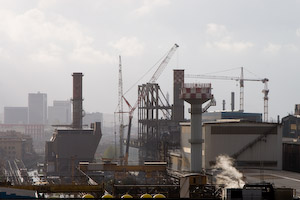
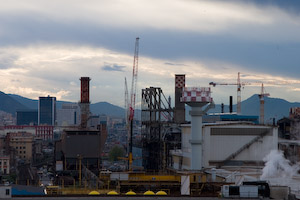
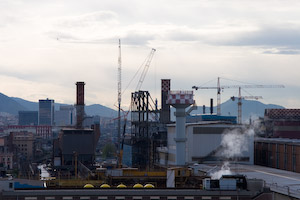
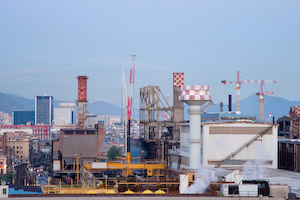
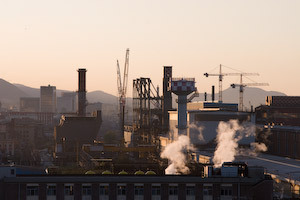
Space dependent colour temperature
The colour of the light is not the same everywhere. If you are standing at a viewpoint overlooking a wide area on a cloudy day you�ll see different light temperatures at different locations. The landscape illuminated directly by the sun with 5500K (afternoon sun) radiation, the areas below the clouds with much cooler light and the shadow areas with even bluer light. All this is affected on where you are, i.e. below a cloud, in the shadow or illuminated by direct light. Why should this affect the light you see? The eye continuously adapts to the light in the close surrounding but also on the scene you are concentrating on, i.e. there is a local and a focus adaptation which is constantly tuned. This is especially visible if you are sitting in a room in the evening illuminated by a standard bulb with low colour temperature. When you are reading a newspaper the eye adapts to the colour of the bulb. If you now turn your head to look out of the window into the landscape at dawn, you�ll see a landscape illuminated by blue light. The people that walk by outside the window with eyes adapted to the light of dawn will look around the scene and view your house with rooms illuminated by yellow light.
The problem now arises if you wish to take a picture of the scene. Your camera only allows to set the white point to the light of the bulb or the light of dawn. If your picture shows areas illuminated by the bulb and areas illuminated by the light of dawn you may only correct for one colour temperature. You have to decide what you prefer, perhaps something inbetween. The same problem arises if you take a picture of the landscape from the viewpoint mentioned above. If the landscape is mainly illuminated by direct sunlight you will probably use that colour for your white point. But what are you choosing if the main landscape is below the could cover and only some spots receive direct sunlight?
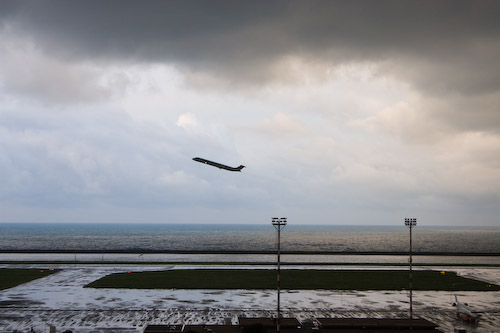
The experiment
During a business stay I lived on the 10th floor of a hotel overlooking the industrial areas of Genua, Italy. The high viewpoint allowed the observation of the effects described above. I took many pictures always from the same regions to show the changing of the light during the day, dependent on the weather condition with sunny days, rainy, misty and cloudy ones. The quick weather changes during the stay allowed a large variety of observations. The south-east heading of the window front allowed observations towards the south and the seaside as well as towards the town and the industrial areas in the east getting headlight in the morning and backlight in the evening.
All the pictures shown in this article were taken from the same location with white point setting left on automatic. All other corrections on the photos were carried out in the same manner for all pictures.